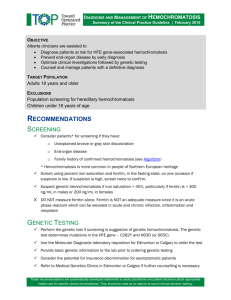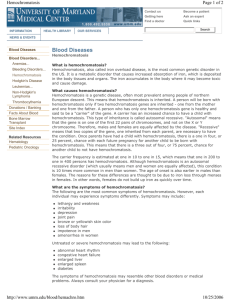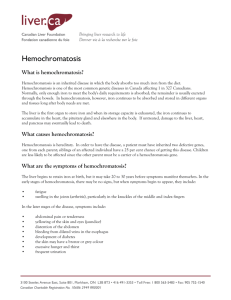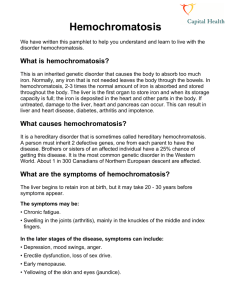Hemochromatosis: a Brief Overview of Disease Diagnosis
advertisement
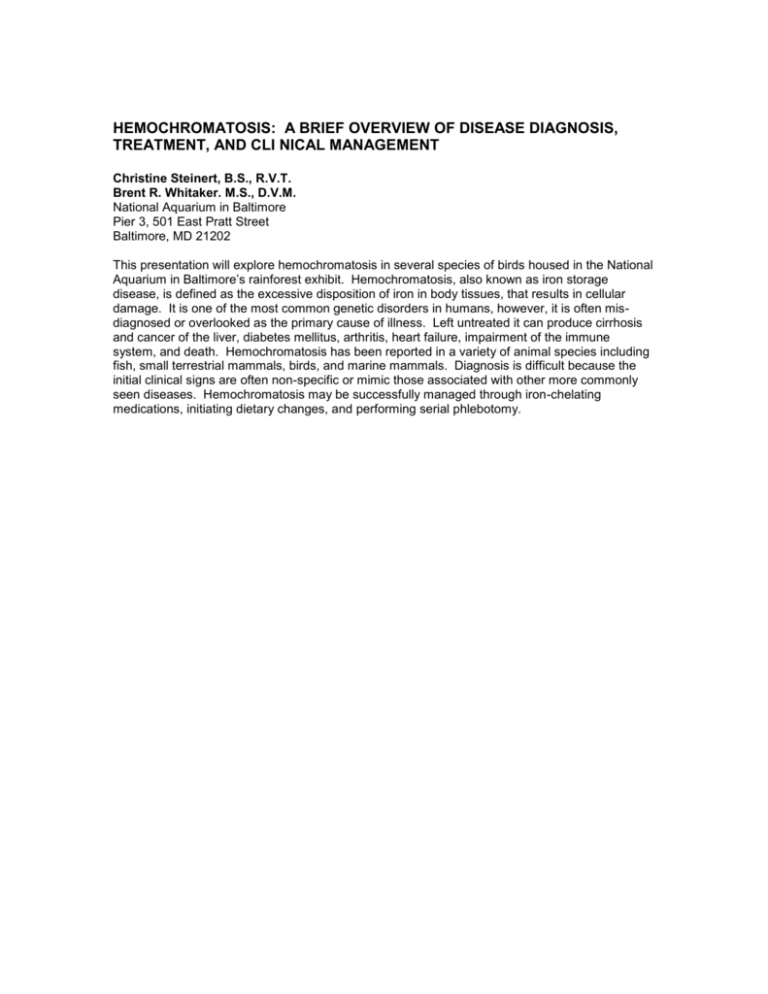
HEMOCHROMATOSIS: A BRIEF OVERVIEW OF DISEASE DIAGNOSIS, TREATMENT, AND CLI NICAL MANAGEMENT Christine Steinert, B.S., R.V.T. Brent R. Whitaker. M.S., D.V.M. National Aquarium in Baltimore Pier 3, 501 East Pratt Street Baltimore, MD 21202 This presentation will explore hemochromatosis in several species of birds housed in the National Aquarium in Baltimore’s rainforest exhibit. Hemochromatosis, also known as iron storage disease, is defined as the excessive disposition of iron in body tissues, that results in cellular damage. It is one of the most common genetic disorders in humans, however, it is often misdiagnosed or overlooked as the primary cause of illness. Left untreated it can produce cirrhosis and cancer of the liver, diabetes mellitus, arthritis, heart failure, impairment of the immune system, and death. Hemochromatosis has been reported in a variety of animal species including fish, small terrestrial mammals, birds, and marine mammals. Diagnosis is difficult because the initial clinical signs are often non-specific or mimic those associated with other more commonly seen diseases. Hemochromatosis may be successfully managed through iron-chelating medications, initiating dietary changes, and performing serial phlebotomy.


